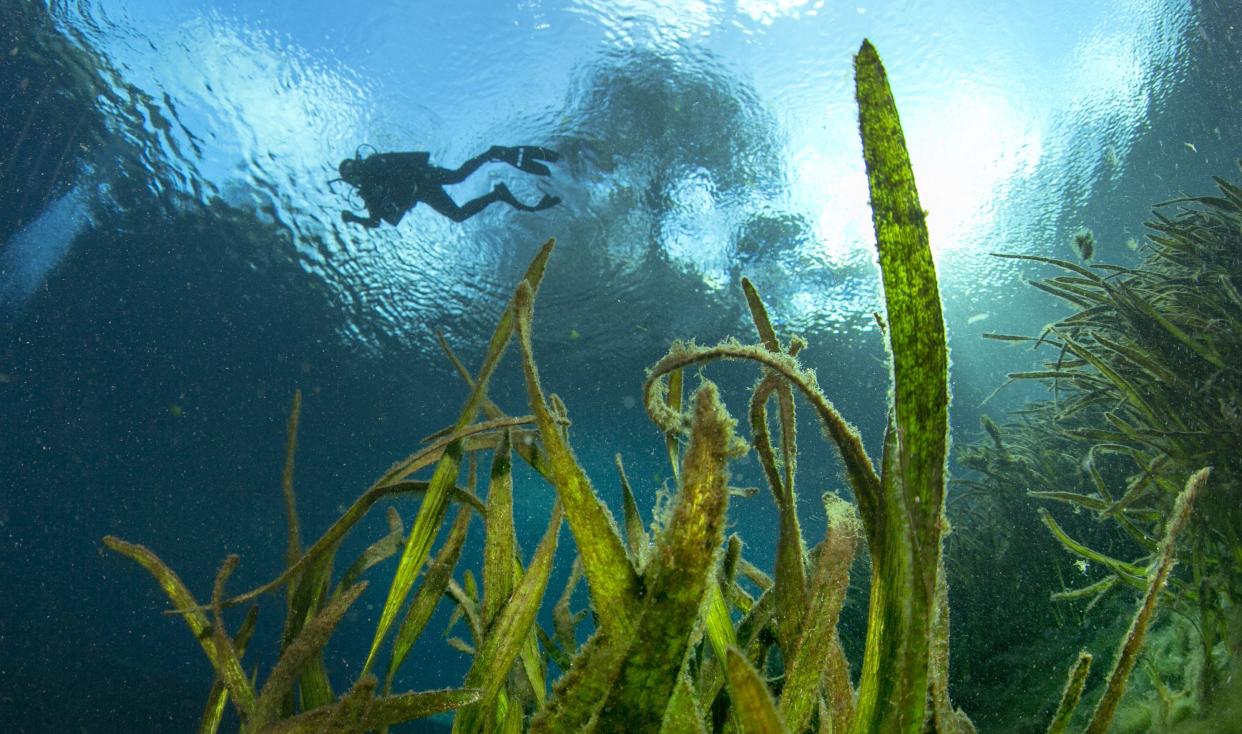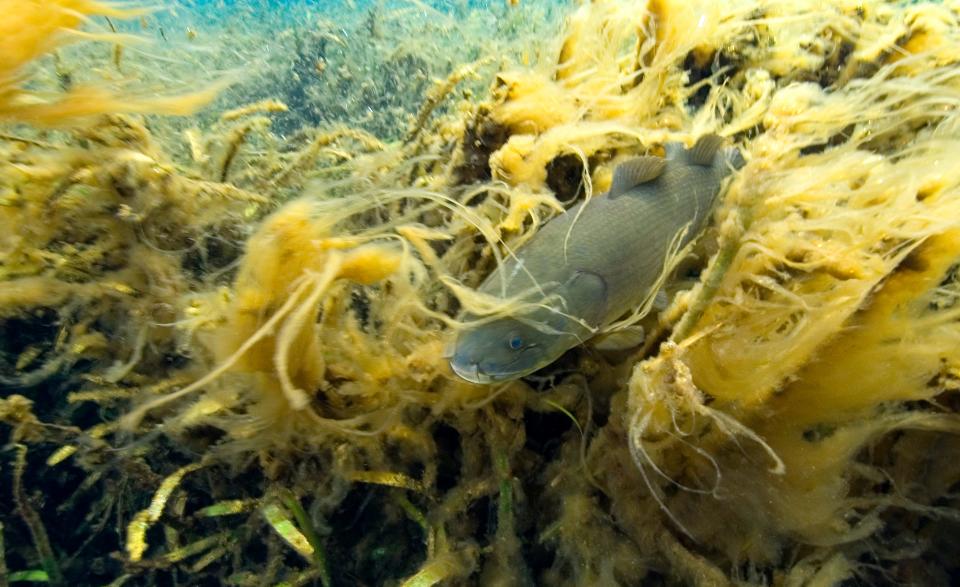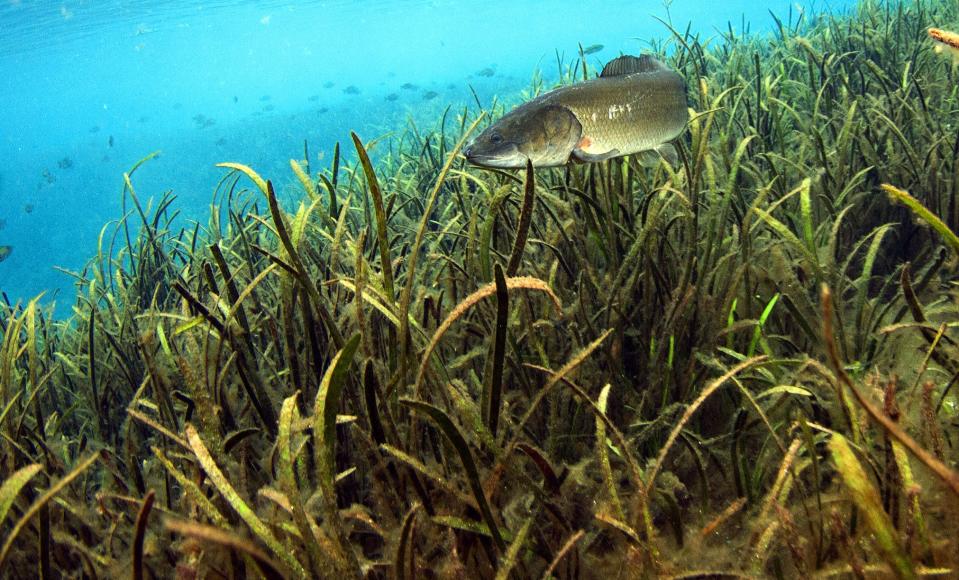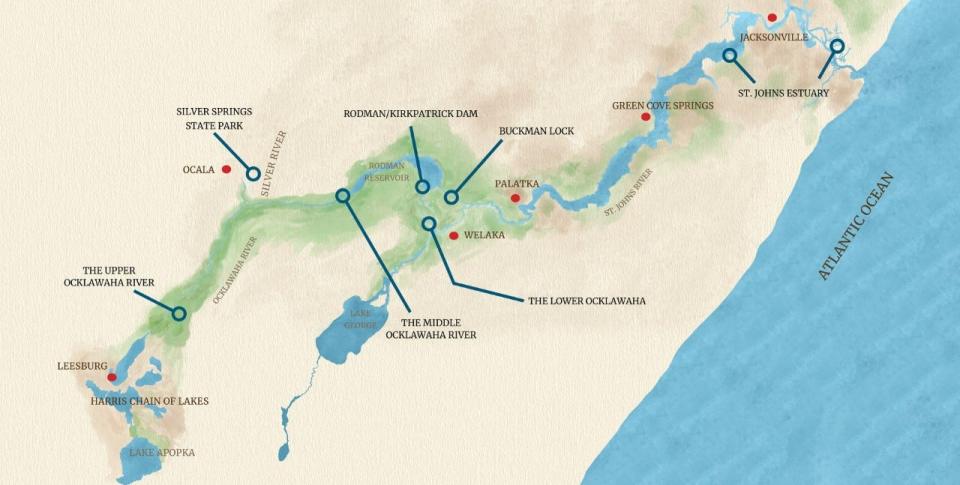The Great Florida Riverway: three rivers, 50 springs and one solution

Growing up in Marion County meant swimming in historic swimming holes like Juniper, Silver Glen, Salt and Silver springs. In those magical waters we learned to swim, snorkel and identify fish and wildlife. Visitors joined us from northeast Florida, across the nation and around the world.
After time away at college and my first job in Tallahassee, I applied to work in marketing at Silver Springs, my dream job. Convincing travel agents, bus operators, scout groups, schools and senior travelers to visit one of Florida’s first and most iconic tourist attractions seemed easy. Reclaiming the million annual visitors who once came through the gates prior to Disney World was not.
At the same time exciting new promotions and programs rolled out, something was happening beneath the surface of our beloved Silver Springs. The large catfish that played bread football beneath the glass-bottomed boats disappeared at an alarming rate. Many of the diverse fish found in Ross Allen’s list in his book, “Eternal Spring,” seemed to be missing.

Lots of things got blamed for the fish loss, from otters to raccoons to anhingas. Thousands were spent on catfish restocking, only to hear that big catfish were being caught readily at the end of the line — the Rodman Dam.
Few openly discussed that maybe the Rodman/Kirkpatrick Dam was the culprit. Dr. Bob Knight, a protégé of Dr. Howard T. Odum, tried to sound the alarm. Odum conducted a comprehensive Silver Springs assessment in the 1950s. Beginning in the 1980s, Knight revealed in multiple post-dam studies the startling news that Silver Springs had lost much of its fish population and biological health.
Silver Springs is still a magical place but decades later, exotic blue tilapia and armored catfish replaced many of the native fish. The glass-bottomed boat rides shortened from 60 to 30 minutes with less to see below. The once beautiful lime green eelgrass is coated with brown algae. The massive schools of mullet that once grazed on the undesirable algae, keeping the ecosystem in balance, are few.
Silver Springs is not the only casualty from the dam. Breaching 2,000 feet of the Rodman/Kirkpatrick Dam would restore the historic fish and aquatic wildlife migratory path and boat way from the Atlantic Ocean to the St. Johns River up the Ocklawaha to Silver Springs. Connection of this Great Florida Riverway links 50 springs, including the 30 springs of Silver Springs, 20 lost springs of the Ocklawaha, and the Ocklawaha, Silver and St. Johns rivers.

Twenty springs of various sizes along the Ocklawaha River are buried beneath the water of the Rodman Reservoir. Some of the larger springs, Cannon and Tobacco Patch, are seen at drawdowns every three to four years. In addition to recreation and essential warm-water winter manatee habitat, these uncovered jewels offer 150 million gallons a day of clear spring water downstream to the lower Ocklawaha and St. Johns rivers with breaching of the dam.
The lower St. Johns River is in trouble, too. Seagrass expert Dr. Bob Virnstein recently shared with the St. Johns River Water Management Board that more than 90% of its eelgrass is gone. These grasses serve as habitat for baby fish and aquatic wildlife and a needed food source for suffering manatees. Additional clear fresh water would help protect the commercial and recreational fish and shellfish industries, knock back saltwater intrusion and create a more sustainable river system.
Resuscitating Silver Springs and unleashing the 20 lost springs of the Ocklawaha River is the largest springs restoration project currently available. It is time to achieve the late Marjorie Harris Carr’s final wish to reclaim the Ocklawaha River, springs, fish, wildlife and thousands of acres of floodplain forest lost for over 50 years.

With the Great Florida Riverway project, we are closer to accomplishing this goal than we have been in a long time. The land is purchased, permit application ready, federal and state funds are available, and polls demonstrate strong bipartisan public support. In a recent poll, more than 74% of likely voters interviewed in Putnam County support restoration with only 7% opposed.
To find out how you can help to reconnect The Great Florida Riverway, visit https://freetheocklawaha.com.
Margaret Hankinson Spontak is chair of the Free the Ocklawaha River Coalition for Everyone. She lives in Ocala. This column is part of The Sun's Messages from the Springs Heartland series.
Join the conversation
Send a letter to the editor (up to 200 words) to letters@gainesville.com. Letters must include the writer's full name and city of residence. Additional guidelines for submitting letters and longer guest columns can be found at bit.ly/sunopinionguidelines.
Journalism matters. Your support matters.
Get a digital subscription to the Gainesville Sun. Includes must-see content on Gainesville.com and Gatorsports.com, breaking news and updates on all your devices, and access to the eEdition. Visit www.gainesville.com/subscribenow to sign up.
This article originally appeared on The Gainesville Sun: Margaret Hankinson Spontak: Breach dam, restore Great Florida Riverway

